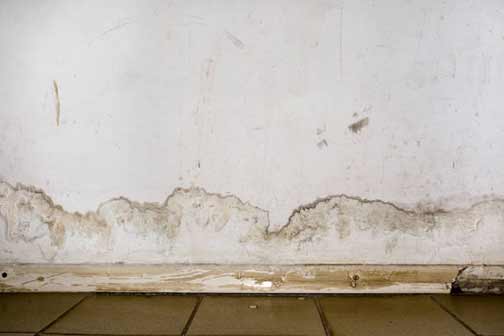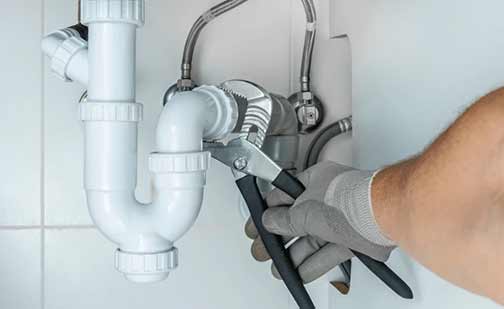Understanding the Function of Proper Drain Operation
Drainage systems are fundamental components of any building’s piping system, working in the background to play the vital function of removing wastewater and providing indoor environments with cleanliness and protection. If the systems are functioning well, they work in the background, without causing stinky odors, water blockages, and even building failure. Well-maintained drains are a strong contributor to occupants’ and residents’ comfort and health, giving assurance that the plumbing system functions smoothly in the background. Yet, whenever issues develop, they become quickly magnified from trivial annoyances to full-blown problems that risk the integrity of the entire plumbing system and become a health hazard.
Identification of the first warning signs that your drains are not just clogged is essential for timely intervention. Such an early step avoids the happening of costly repairs, environmental hazards, as well as health complications, emphasizing the importance of understanding the underlying symptoms indicating systemic drain problems. Here we are looking to identify the most indicative signs that your drainage system might have issues beyond mere clogs, where professional maintenance and inspection are essential to ensuring long-term functionality and safety.
Persistent Bad Smells: An Indicator of Concealed Drain Issues
One of the most obvious and often frustrating signs that your drain system might be suffering from problems of greater complexity is the frequent recurrence of powerful foul smells emanating from your drains or even the surrounding vicinity. While the occasional whiff of smell can sometimes be the result of residual debris or minor blockage, a persistent, overpowering smell is often a sign of more complex issues at play. The issues can vary from broken or burst pipes, stagnant waste accumulation, or blocked venting systems that cannot discharge gases effectively. The odors typically are a result of the release of gases such as methane and sulfur compounds that are byproducts of decomposing organic matter in the pipes. In addition to providing a foul setting, the gases pose a threat if inhaled over long periods.
If the smell persists despite regular cleaning or deodorization, it is a likely cause for professional inspection. Allowing current smells to go untreated may escalate the conditions to pipe leakage, structural damage, and subsequent exposure to toxic gases. The symptoms must be treated urgently with the help of a professional plumber for diagnosing the cause, preventing health hazards, and restoring a fresh, odor-free environment once more.
Sluggish Drainage and Frequent Backups: Signs of Systemic Problems
Regular backups or sluggish drainage in multiple fixtures such as sinks, toilets, or floor drains are typically accounted for by dismissing them as mere clogs. However, when the same issues happen and recur in various parts of the plumbing system simultaneously, they are indicative of much deeper, systemic problems. These symptoms can result from obstructions reducing flow by way of partial constrictions, but they usually signal more severe issues like collapsed pipes, misaligned sewer lines, or invasion by roots, grease, mineral deposits, or debris into your system. These kinds of obstructions can significantly impair the overall performance of your drain system and cause frequent backups that may cause water damage, unpleasant odors, and unhygienic conditions.
With time, the buildup of these blockages can result in pressure build-up and pipe degradation, posing the risk of leaks or total system failure. Prescribing for these symptoms early on via professional diagnosis and specific repairs can avert serious damage, lower repair expenses, and make sure your plumbing works efficiently and consistently. Periodic checking and servicing are essential in order to pick up and fix these root causes before they become real disasters.

Unaccounted for Water Stains and Moisture: Signs of Hidden Drain Damage
Unaccounted for water stains, moisture spots, or mold growth on walls, ceilings, or floors near plumbing fixtures is another critical sign that points towards deeper drain system issues. These signs often point towards leaks or cracks in the drain pipes enabling wastewater to seep into neighboring structures. Such leaks may be subtle, frequently not being noticed for weeks or months, but progressively weakening structures over time. Stains from water that is coupled with the presence of a penetrating odor or growth of moldy patches are signs of chronic moisture issues that have weakened building materials and encouraged unhealthy mold growth.
These silent leaks may result in expensive repairs if caught too late, such as in the form of structural bracing or removal of compromised walls and flooring. Moreover, chronic moistness and mold exposure present health hazards to individuals with respiratory issues or allergies. If you see stains caused by water with no apparent origin or notice signs of mold and wetness, have your drain system professionally checked. Early detection and repair will prevent massive structural damage, minimize health risk, and enhance indoor environment integrity.
Unusual Plumbing Sounds: Signs of Root Drainage Problems
Unusual sounds such as bubbling, gurgling, or banging noises produced by your drains or plumbing devices are normally overlooked but can turn out to be significant indicators of drainage issues. The sounds typically occur when air becomes trapped inside pipes or there is a blockage in the normal flow of wastewater. Gurgling sounds, particularly, suggest venting problems, blockages, or a malfunctioning sewer line that forces air through the system in an abnormal way. Bangs or thumps can suggest pipe movement, loose joints, or sagging parts in the drain system.
These noises are typically warning signs that the system is under stress and can collapse at any moment. Ignoring them can lead to even more severe damage, including pipe bursts or complete system failure. A professional should then be hired to inspect the plumbing to identify and repair the reasons behind the noises. Preventing issues early on can avoid costly repairs, avert plumbing catastrophes, and have the system running smoothly and silently.
Water Clarity and Out-of-the-Norm Alterations: Underground Drain System Malfunctions
Your water’s clarity that passes through your faucets can be a pointer to significant internal drain system issues. When you become aware of alterations in the color, clarity, taste, or odor of your water—such as discoloration, sediment, or odor—these are signs that waste or toxins are leaking into your water system via compromised pipes. These problems most often arise due to corrosion, cracks, or defects in the sewer or drain pipes that allow wastewater to flow into the clean water system. Filthy water not only poses danger to your health but also indicates that your plumbing system is defective at its root level.
These problems need to be addressed by professional hands immediately to determine the cause of contamination and make repairs as needed. Routine water testing may be able to detect signs of deterioration early on, so your water will still be safe and your plumbing system will still work. Early detection of these hidden failures is necessary to prevent compromising your health, water quality, and the risk of more serious and expensive repairs in the future.
Conclusion: The Critical Need for Professional Drain Inspection and Maintenance
Small drain issues can often be resolved with a cleaning or minor repair, but the aforementioned signs obviously indicate that your drain system may be suffering from more serious, underlying complications. Neglecting them could lead to structural weakening, health hazards, and expensive repairs which could have been avoided if taken care of immediately. It is crucial to hire qualified plumbing services for thorough inspections to identify the cause of these symptoms. Professional inspections utilize the most advanced equipment such as sewer camera inspections, pressure tests, and leak detection to identify issues the human eye may not detect.
Regular inspections and prompt repairs extend the life of your drain system, prevent emergencies, and ensure the safety and comfort of your working or living environment. Seeing the signs and acting fast can save you from enduring the inconvenience, health risks, and expense of a major plumbing breakdown. Taking care of your drains is good property management, so professional maintenance and inspection should be included in your building maintenance program.


